Hey there, fellow enthusiasts! Get ready to embark on a journey into the captivating world of hedgehogs.
We’ve dug deep into their past and uncovered seven mind-blowing facts from history that will leave you in awe. From their ancient lineage to their literary prominence, we’ll explore how these adorable creatures have evolved and influenced civilizations throughout time.
So grab a cup of tea, settle in, and prepare to be amazed by the fascinating evolution of our prickly friends.
Let’s dive right in!
Key Takeaways
- Prehistoric hedgehogs had a diverse range of dietary preferences, including insects, small vertebrates, and plants.
- Hedgehogs held deep symbolic significance in ancient civilizations, representing protection, fertility, wisdom, and serving as spiritual guides.
- Hedgehogs were popular subjects in various forms of artwork, symbolizing protection, defense, individuality, and rebellion.
- Hedgehogs have evolved unique adaptations such as spiky exteriors for defense, hibernation for energy conservation, and excellent hearing and smell for survival in various habitats.
Prehistoric Hedgehogs: An Ancient Lineage
You’ll be amazed to learn that prehistoric hedgehogs have been part of an ancient lineage. These fascinating creatures have left behind a trail of evidence in the form of prehistoric hedgehog fossils, which provide valuable insights into their evolution and existence.
One key aspect that stands out is the ancient hedgehog diet. Through careful examination of these fossils, scientists have discovered that prehistoric hedgehogs had a diverse range of dietary preferences. They were not limited to just one type of food but instead adapted to different environments and available resources. The remains found suggest that they primarily consumed insects, small vertebrates, and even plants.
It is believed that their spines played a vital role in capturing prey or defending against predators while foraging for food. Unlike modern-day hedgehogs, some prehistoric species had larger teeth, suggesting a more carnivorous diet.
These findings shed light on the remarkable adaptability and survival skills possessed by these early hedgehogs. Their ability to thrive across various ecosystems is truly impressive and showcases their resilience as a species.
Understanding the ancient hedgehog diet not only deepens our knowledge about these incredible creatures but also highlights their significant contribution to Earth’s biodiversity throughout history. It reminds us that we are connected to this ancient lineage and encourages us to appreciate the rich tapestry of life we share on this planet.
Hedgehogs in Ancient Civilizations: From Egypt to Mesopotamia
As we delve into the fascinating world of hedgehogs in ancient civilizations, it’s impossible to ignore their symbolic significance and their portrayal in art.
Hedgehogs held deep meaning for these cultures, often representing protection, fertility, and wisdom.
Their unique physical characteristics and behaviors made them a popular subject for artists, who depicted them in various forms of artwork such as pottery, sculptures, and paintings.
Let’s explore the rich history of hedgehog symbolism and their depictions in ancient art.
Symbolic Significance of Hedgehogs
Don’t underestimate the symbolic significance that hedgehogs have held throughout history. These adorable creatures have played a significant role as spiritual guides and participants in religious rituals.
In many ancient cultures, hedgehogs were revered for their unique qualities and perceived as messengers from the divine. They were seen as symbols of protection, wisdom, and intuition.
Hedgehogs often served as spiritual guides, leading individuals on their spiritual paths. Their ability to navigate through dark and difficult terrain made them powerful symbols of guidance and resilience. People believed that by observing hedgehogs’ behavior, they could gain insights into their own lives and make better decisions.
Moreover, hedgehogs were also incorporated into various religious rituals. For example, in certain rituals during the ancient Egyptian civilization, hedgehog figurines were placed in tombs to accompany the deceased on their journey to the afterlife. It was believed that these small creatures would protect souls from evil spirits.
The symbolism surrounding hedgehogs demonstrates how deeply intertwined they were with human culture throughout history. Their presence in spiritual practices and religious ceremonies highlights the sense of belonging humans sought by connecting with these remarkable animals.
Hedgehog Depictions in Art
Hedgehog depictions in art showcase their charm and playfulness, captivating viewers with their adorable and endearing nature. In Renaissance art, hedgehogs were often depicted alongside other animals as symbols of protection and defense. Their spiky exteriors conveyed a sense of strength and resilience, while their small size evoked a gentle vulnerability. These representations emphasized the dynamic balance between fragility and fortitude that hedgehogs embody.
Fast forward to modern street art, where hedgehogs have found a new place to shine. Graffiti artists have embraced these prickly creatures as symbols of individuality and rebellion. Hedgehogs are often depicted in vibrant colors and bold patterns, adorning walls with their charismatic presence. These contemporary interpretations celebrate the unique qualities that make each hedgehog special, encouraging viewers to embrace their own quirks.
Whether portrayed in classical masterpieces or urban murals, hedgehog depictions in art serve as reminders of our shared desire for connection and belonging. They remind us that even the smallest creatures can leave a lasting impact on our hearts.
The Evolutionary Adaptations of Hedgehogs
The evolutionary adaptations of hedgehogs can be traced back millions of years. These fascinating creatures have undergone a series of changes over time, driven by the forces of natural selection.
One of the most notable adaptations is their spiky exterior, which serves as a defense mechanism against predators. The spines are made up of keratin, the same material found in our own hair and nails. This adaptation allows hedgehogs to curl up into a tight ball, protecting their vulnerable body parts from harm.
Another important adaptation is their ability to hibernate during harsh winters when food is scarce. Hedgehogs have the unique ability to lower their metabolic rate and enter a state of dormancy, conserving energy until conditions improve. This survival strategy has helped them endure challenging environments for millions of years.
In addition to these physical adaptations, hedgehogs possess keen senses that aid in their survival. Their excellent hearing allows them to detect approaching predators or potential mates even in low-light conditions. Their strong sense of smell helps them locate food sources such as insects and small rodents.
Through the process of evolution and natural selection, hedgehogs have developed an array of remarkable adaptations that enable them to thrive in various habitats around the world. These evolutionary traits offer insight into the resilience and ingenuity present within nature’s diverse tapestry.
Hedgehogs in Literature and Folklore: Myths and Legends
When it comes to hedgehogs in literature and folklore, there is a rich tapestry of stories and symbols that have been woven throughout history. Hedgehogs have often been used as symbols in various stories, representing different qualities depending on the context.
Additionally, there are famous tales from folklore that feature hedgehogs as central characters or important elements of the narrative. In this discussion, we will explore the fascinating world of hedgehog symbolism in stories and delve into some well-known hedgehog folklore tales.
Hedgehog Symbolism in Stories
You’ll be surprised by the rich symbolism that hedgehogs bring to stories throughout history.
In modern literature, hedgehogs often represent resilience and protection. Their spiky exterior acts as a shield against danger, while their small size signifies the power of vulnerability. This symbolism can be seen in characters like Sonic the Hedgehog, who uses his speed and determination to overcome obstacles.
In religious texts, hedgehogs are associated with wisdom and intuition. They are often depicted as wise creatures who possess secret knowledge of the spiritual realm. These representations highlight the importance of inner guidance and understanding in navigating life’s challenges.
Whether in literature or religious texts, hedgehogs symbolize strength, protection, wisdom, and resilience – qualities that resonate deeply with our human desire for belonging and purpose.
Famous Hedgehog Folklore Tales
In famous folklore tales, hedgehogs have been known to outsmart cunning foxes and solve clever riddles. These famous hedgehog folktales showcase the intelligence and wit attributed to these spiky creatures.
One such legend tells of a hedgehog who challenges a sly fox to a contest of wits. The quick-thinking hedgehog manages to outwit the fox at every turn, leaving the fox humbled and defeated.
Another popular myth revolves around a wise old hedgehog who possesses the ability to predict the future. Villagers would seek his guidance in times of uncertainty, believing in his mystical powers.
Hedgehog legends and myths not only entertain but also provide valuable life lessons about resourcefulness and wisdom. Through these tales, we are reminded that even the smallest among us can triumph against adversity through our intelligence and cunning.
Hedgehogs as Pets: A Historical Perspective
If you’re considering a hedgehog as a pet, it’s important to understand their historical significance in the world of domestication. Hedgehogs have been cherished as companions for centuries, and their presence in modern households continues to bring joy and fascination. These adorable creatures have captured the hearts of many with their unique appearance and gentle personalities.
In ancient times, hedgehogs were revered for their ability to ward off evil spirits. People believed that having a hedgehog in their home would bring good luck and protect them from harm. This belief has persisted through the ages, leading to the popularity of hedgehogs as pets today.
Hedgehogs make excellent companions due to their independent nature and low-maintenance care requirements. They are solitary animals by nature, which means they can adapt well to living alone in a household. Their small size makes them suitable for apartment living, and they are generally quiet pets who won’t disturb your neighbors.
Modern households have embraced hedgehogs as beloved family members. With proper socialization and handling, these spiky critters can form strong bonds with their owners. Although they may appear prickly at first glance, once you earn their trust, you’ll find that they are affectionate and playful creatures.
Hedgehog Conservation Efforts Throughout History
Throughout the centuries, people like you have played a crucial role in protecting and preserving hedgehog populations through various conservation efforts. As we witness a concerning decline in hedgehog populations worldwide, it is more important than ever to come together and implement effective conservation strategies.
One of the main factors contributing to the decline in hedgehog populations is habitat loss. Urbanization and agricultural practices have led to the destruction of their natural habitats, leaving them with limited areas to thrive. To combat this issue, organizations and individuals have been working tirelessly to create wildlife corridors and protected areas specifically designed for hedgehogs. These safe havens provide them with suitable habitats where they can find food, shelter, and breed.
Another major threat facing hedgehogs is road mortality. With an increasing number of roads being built each year, these small creatures often fall victim to traffic accidents while attempting to cross busy streets. As part of our conservation efforts, initiatives such as installing wildlife tunnels or underpasses beneath roads have been implemented to reduce roadkill incidents.
Additionally, education plays a vital role in saving our beloved hedgehogs. By raising awareness about their importance in ecosystems and teaching people how they can contribute to their conservation, we can inspire more individuals like you to take action. Educational programs are being conducted at schools and community centers around the world, spreading knowledge about ways we can all make a difference.
Furthermore, encouraging responsible pet ownership is another aspect of conserving hedgehog populations. Many people are unaware that owning a pet hedgehog requires specific care and attention. By educating potential owners about their needs and promoting adoption rather than wild capture or breeding for profit, we can help ensure that these adorable creatures are well cared for while also reducing pressure on wild populations.
Hedgehogs in Popular Culture: From Sonic to Harry Potter
From video games like Sonic the Hedgehog to books and movies like Harry Potter, you’ve probably encountered hedgehogs in popular culture more often than you realize. These spiky creatures have made quite the impact on our entertainment industry, and even influenced fashion trends along the way.
Here are some fascinating facts about hedgehogs in popular culture:
Sonic the Hedgehog franchise: This iconic video game series introduced us to Sonic, a blue hedgehog with lightning-fast speed. The franchise has become a cultural phenomenon, spawning multiple games, animated TV shows, and even a feature film.
Hedgehog inspired fashion trends: Believe it or not, hedgehogs have also influenced fashion! From cute hedgehog-shaped accessories to clothing featuring adorable hedgehog prints, these prickly creatures have found their way onto runways and into wardrobes around the world.
Harry Potter connection: In J.K. Rowling’s beloved Harry Potter series, one of Hagrid’s pets is a giant three-headed dog named Fluffy. Interestingly enough, Fluffy was actually inspired by a hedgehog named Spike that Rowling owned as a child.
Cultural symbolism: Hedgehogs are often seen as symbols of protection and defense due to their ability to curl up into a spiky ball when threatened. This symbolism has been used in various forms of media to represent resilience and self-preservation.
Whether they’re speeding through virtual worlds or gracing the pages of our favorite stories, hedgehogs continue to captivate our imaginations and leave their mark on popular culture. So next time you encounter one of these adorable creatures in your favorite video game or book, remember their influence goes beyond entertainment – they’ve even made an impact on our sense of style!
Frequently Asked Questions
Are Hedgehogs Related to Other Spiky Animals Like Porcupines or Echidnas?
Hedgehogs and porcupines are both spiky animals, but they have different defense mechanisms. Hedgehogs curl into a ball, while porcupines use their quills. That’s why they’re not found in the same habitats.
How Did Hedgehogs Adapt to Survive in Different Environments Throughout History?
Throughout history, hedgehogs have cleverly adapted to various environments. Their survival skills are truly remarkable! From changing their diet to suit different habitats, these spiky creatures continue to thrive in diverse ecosystems.
What Are Some Famous Myths or Legends Involving Hedgehogs in Different Cultures?
Famous hedgehog myths and legends are fascinating. Cultural beliefs about hedgehogs vary across different societies, with stories of their cleverness and magical powers being passed down through generations. These tales create a sense of wonder and belonging.
When Did People Start Keeping Hedgehogs as Pets, and Why?
People started keeping hedgehogs as pets in the 1980s due to their adorable appearance and low maintenance. Hedgehogs make great companions, but they require special care like providing a proper diet, creating an enriched environment, and being aware of common health issues.
What Are Some Notable Conservation Efforts That Have Been Made to Protect Hedgehog Populations Over Time?
We’ve all heard about the decline in hedgehog populations, but did you know there have been some amazing conservation efforts to protect these spiky creatures? Let’s dive into the world of hedgehog conservation today!
Conclusion
In conclusion, hedgehogs have undergone a remarkable evolution throughout history. From their ancient lineage to their presence in ancient civilizations, these spiky creatures have left a lasting impact on human culture.
With their unique adaptations and fascinating folklore, hedgehogs have captured our imaginations and become beloved pets. The conservation efforts dedicated to protecting them reflect our deep appreciation for these incredible animals.
And let’s not forget the role they play in popular culture, from video games to books. It’s amazing how such a small creature can leave such a big impression!

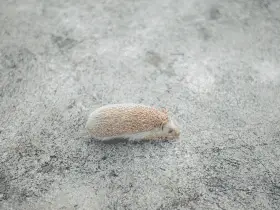
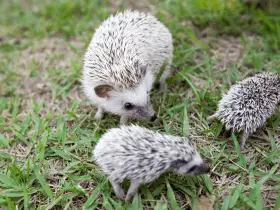

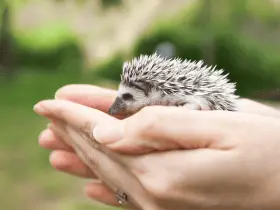
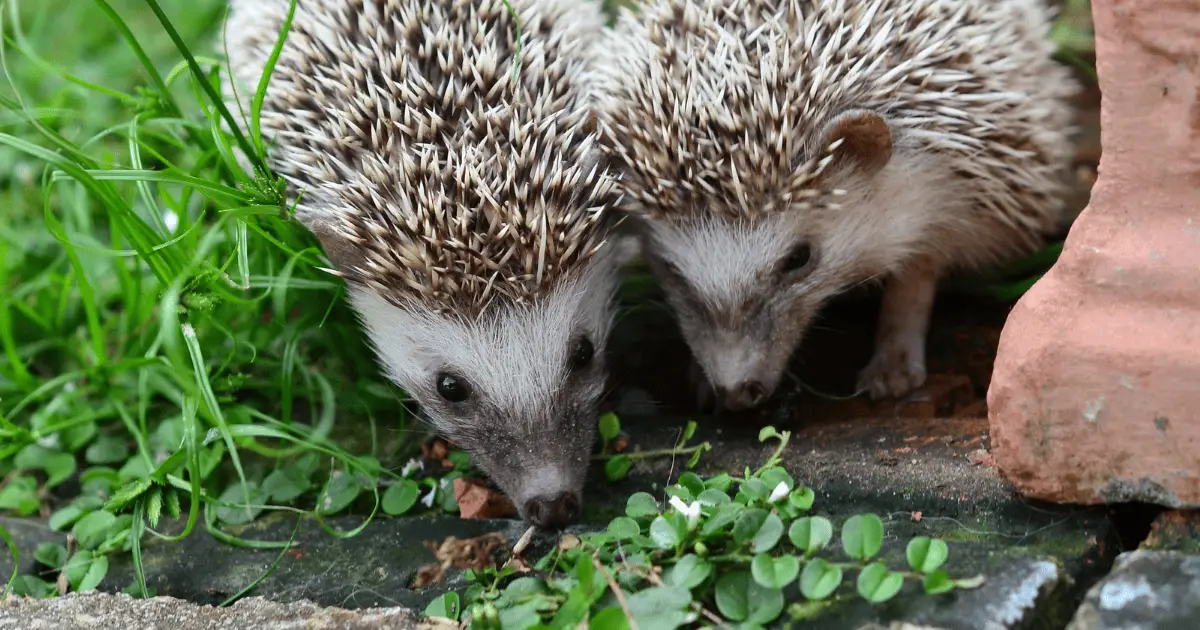
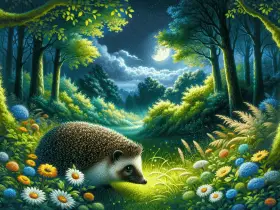


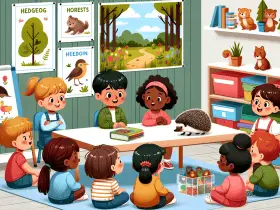
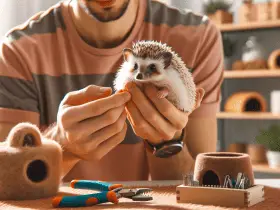
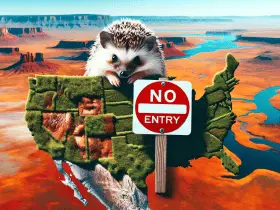
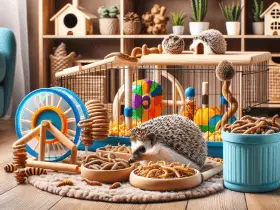
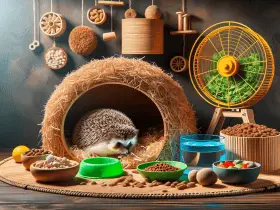
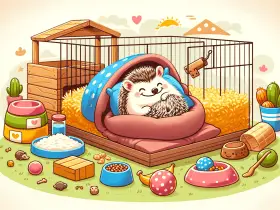
Leave a Reply
View Comments